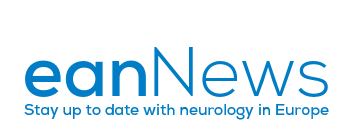Dear Readers,
Let us take this opportunity and invite you to read articles which have been carefully chosen by our Scientific Panels Autonomic nervous system disorders , Higher cortical functions, Infectious diseases, Movement disorders, Neuroepidemiology & Palliative care:
Squair… Continue Reading
Search results for
"paper"
-
-
Interviews
Interview with Philip Larkin – President of EAPC – the European Association for Palliative Care
January 1, 2016Philip Larkin is incoming President of EAPC (European Association of Palliative Care). David Vodušek (DV): The mission statement of EAPC states: “…EAPC strives to develop and promote palliative care in Europe through information, education and research using multi-professional collaboration, while engaging with stakeholders at all levels.” How would you translate this statement towards possible cooperation with EAN? Philip Larkin (PL): It may be helpful to explain initially how EAPC works. EAPC is a membership organisation and currently has 55 member associations across 31 countries and people are engaged in palliative care from a range of perspectives; specialist clinical practice, education, policy and of course research. -
Education corner
Connecting the next generation of Neurologists in Europe: the EAN Residents and Research Fellows section
January 1, 2016by Antonella Macerollo, P. Balicza, O. Györfi, L. Klingelhöfer, A. Macerollo, V. Papp, A. Sauerbier There has been the outstanding need to provide European junior colleagues with a platform for encouraging intercultural exchanges and support, and tackling upcoming challenges of… Continue Reading -
Scientific Corner
A consensus review on the development of palliative care for patients with chronic and progressive neurological disease
January 1, 2016by David Oliver In the January issue of the European Journal of Neurology, a Consensus review on the development of palliative care for patients with chronic and progressive neurological disease is published and we highlight this important article by offering… Continue Reading -
Report from Shabnam Khalilova from Azerbaijan visiting the Department of Neurology at the Haukeland University Hospital, Bergen, Norway under the supervision of Professor Ole Björn Tysnes It was my big dream to visit a European hospital and to observe the… Continue Reading
-
Dear Readers, In this issue, we kindly invite you to read articles which have been chosen for you by our Scientific Panels ALS and frontotemporal dementia , Autonomic nervous system disorders, Higher cortical functions, Movement disorders, Neurocritical care, Neurogenetics, Neurorehabilitation … Continue Reading
-
Interviews
Interview with Thomas Skordas of the DG for communication networks, content and technology, European Commission
November 1, 2015"Horizon 2020 is the financial instrument implementing the Innovation Union, a Europe 2020 flagship initiative aimed at securing Europe's global competitiveness", Thomas Skordas. Elena Moro (EM): Can you briefly illustrate to the Neuropenews readers what are the FET – Future and Emerging Technologies – actions and which place do they take within the EC’s H2020 programme? Thomas Skordas (TS): FET – Future and Emerging Technologies – is part of the "Excellent Science" pillar of Horizon 2020. The other components of this pillar are the "European Research Council (ERC)", the "Marie Skłodowska-Curie actions" and the "Research infrastructures" actions. Altogether, these four components aim to reinforce, widen and extend the excellence of the Union's science base and ensure a supply of world-class research and talent pursuing to secure Europe's long term competitiveness and well-being. -
Dear readers, Do not miss the chance to read articles which have been carefully chosen for this issue by our Scientific Panels Higher cortical functions, Movement disorders, Neuroimaging and Neuroepidemiology: Qin P, Wu X, Huang Z, et al. How are… Continue Reading
-
by Claudia Sommer and Theodor Landis The Teaching Course sub-Committee consists of the following members: Theodor Landis, Switzerland – Chairman Members: Anish Bahra, UK (responsible for interactive sessions); Gilles Edan, France (responsible for Spring School); Oleg Levin, Russia; Viktoria Papp,… Continue Reading
-
Report from Floriana Boghez from Romania visiting the Sleep Center, Civic Hospital in Lugano, Switzerland under the supervision of Dr Mauro Manconi I spent six very useful weeks in the Neurology and Neurophysiology Department of the Civic Hospital in Lugano,… Continue Reading
-
Dear readers, In this issue, we invite you to read three articles which have been carefully chosen by our Scientific Panels: Higher cortical functions, Sleep-wake disorders, and Palliative care: Ossenkopele R, Pijnenburg Y, Perry DC, et al. The behavioural/dysexecutive variant… Continue Reading
-
Scientific Corner
EAN Guideline Production Group: Procedure for updating EAN guidelines
October 1, 2015EAN Guideline Production Group: Procedure for updating EAN guidelines The EAN Scientific Committee (SC) determines each year the need for updating guidelines. In addition, each Scientific Panel (SP) may decide to update a guideline at any moment, depending on the… Continue Reading -
In this issue of the Neuropenews, our Subspecialty Scientific Panel Sleep-wake disorders invites you to read an article on Alzheimer’s disease: “Alzheimer’s disease (AD) is the most frequent dementia. Sporadic AD is thought to be due, in part, to impaired… Continue Reading
-
Website: http://www.ucl.ac.uk/ion/education/courses/other/neurology/ This is an annual update course run by the Institute of Neurology Queen Square, London. The course is designed for consultants and senior trainees in neurology, and other neuroscience specialties, from the UK, Europe and worldwide, and aims… Continue Reading
-
Forum
Science from a Tweet: Found a genetic link between van Gogh and his paintings; but let’s not lose the magic
August 1, 2015by Delia Lenzi Power and collaborators have recently published in the Journal Nature Neuroscience a paper on the genetic link between creativity and psychiatric disorders such as bipolar disorder and schizofrenia. They found that polygenic risk scores for schizophrenia and… Continue Reading
